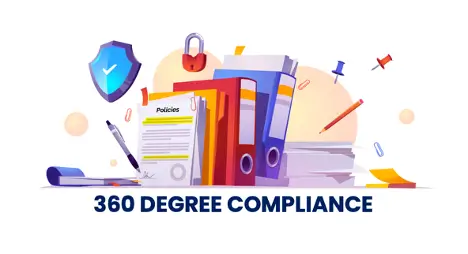Back to Basics – 3 Checklist Items for 360 Degree CFPB and Reg F Compliance
- March 11, 2022
- Category: Reg F

Recommended Reading
Recently, BLG360 and Provana came together to discuss the essentials of comprehensive compliance management in the post-Reg F Accounts Receivable Management (ARM) landscape. John H. Bedard, Jr. from BLG360 and our team discussed the importance of achieving compliance with internal systems of control to achieve compliance with the external rules such as Reg F. Here are key takeaways from the webinar.
1. Modernize your compliance training
As suggested by the Bureau, a compliance management system (CMS) has to have certain necessary compliance ingredients, including a dynamic training program that evolves with the employees’ understanding of a new regulation/law. In view of the new rule, agencies urgently need training tools within their CMS that let them send digital memos to employees for training and keep track of their learning as well. This helps ensure new training gets rolled out to new employees at the right time. In addition to this, acknowledging compliance training and policies certifications also need to be automated. There needs to be an automatic system in place that pushes employees to complete their training and provides the agency a single view of trained vs non-trained employees on a new regulation/policy change.
2. Make the most of the 7-in-7 time window
Reg F’s most talked-about rule, 7-in-7, doesn’t seem to be a big compliance challenge given most agencies have tracking technology in place to prevent an agent from calling a consumer an eighth time in the seven days window. However, given the rule has a seven days grace period, it becomes challenging when consumers make baiting calls and provide incomplete info, knowing the collector has to wait seven days before calling them back. “I have seen collectors left scratching their head when they get an inbound call from a consumer. And you know nothing happens on the call other than for the consumer to identify who they are before they hang up,” John shared his experience.
A smart solution to this challenge could be asking consumers for their consent for additional calls as there are certain information-seeking calls that don’t count toward 7-in-7. This also means, requesting permission to make that eighth call should be incorporated in your agents’ on-call scripts.
Additionally, incidents falling outside the boundaries of the 7-in-7 rule need to be investigated deeply. To achieve the same, make sure your CMS can track calls you have taken consents for and calls made by the right party within the seven-day window. This way, your compliance management system dashboard(s) will tell you what exactly is happening in your call center.
3. Approach dispute management more strategically
As per Bureau’s Reg F rule (implemented last year), debt collectors are required to put the bureau’s website on their collection letters. Naturally, as a result, an increase in the number of disputes is expected that are not always bona fide. Be that as it may, the dispute data can be incredibly meaningful and help you unearth top contributing factors of incoming dispute traffic.
Start tracking data and separating the analysis of data based on the bureau’s outreach to consumers. Separating illegitimate disputes from legit ones and then acting on insights can always help you optimize your processes and push for better compliance training programs. Under the fair credit reporting act, regulation F talks about duplicate disputes and how to handle them. Use the same guide to dismiss and discourage duplicate disputes.








